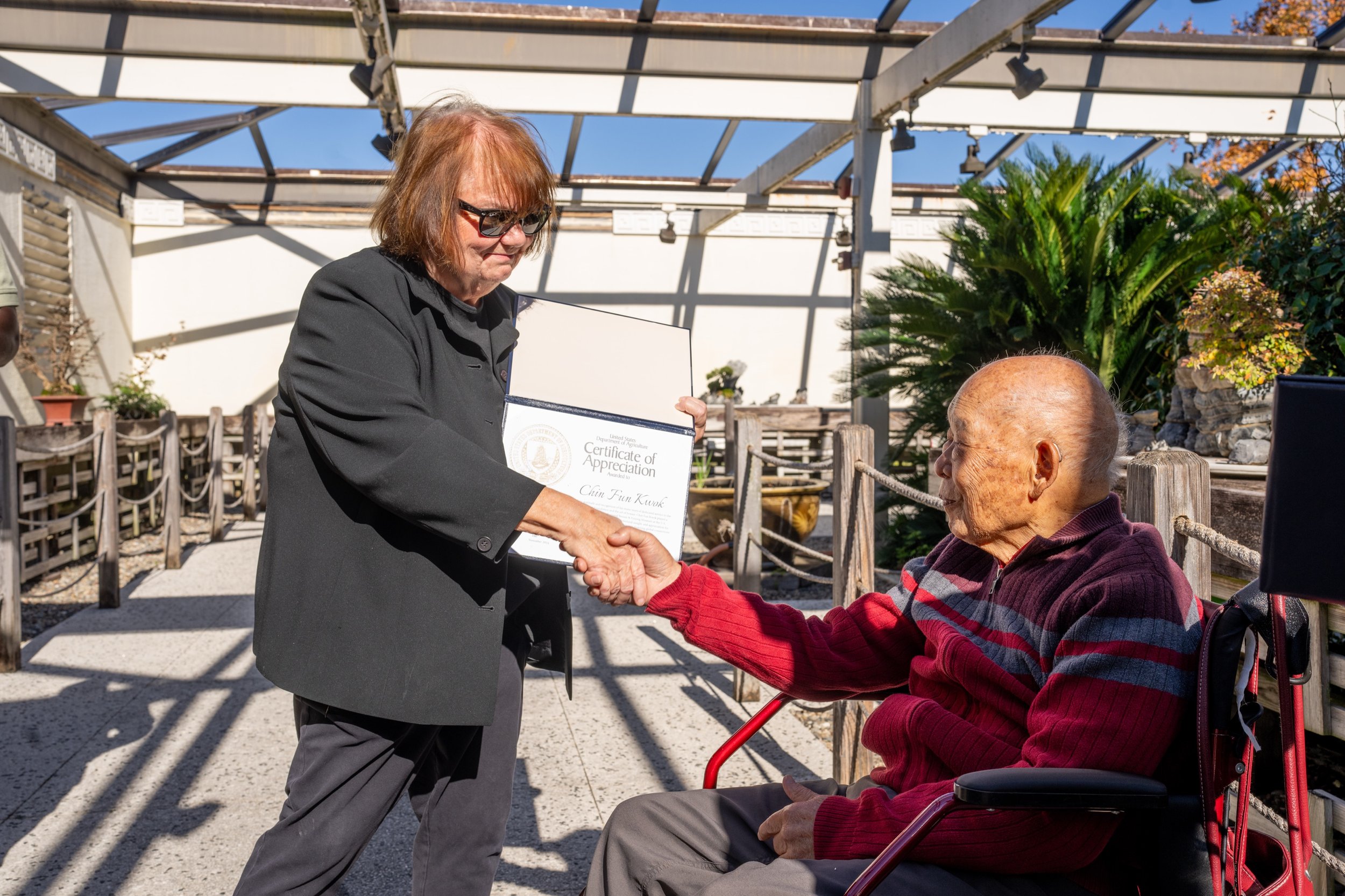Today, the National Bonsai Foundation and National Bonsai & Penjing Museum welcomed Chin Fun Kwok, along with his wife Florence and daughter Daphne, to celebrate his venerated legacy.
In attendance were Museum Curator Michael James and NBF executive director Bobbie Alexander, who presented Mr. Kwok with a certificate of appreciation on behalf of the NBF Board, honoring his dedication and significant contributions. James also presented a certificate on behalf of the U.S. National Arboretum, which has housed the Museum since its inception in 1976. Also joining the celebration were esteemed former NBF board members Chuck Croft and Joe Gutierrez, as well as Jack Rubenstein, an active bonsai community member and officer of the Northern Virginia Bonsai Society.
Together, we proudly honored Mr. Kwok for his remarkable dedication and countless contributions to bonsai and penjing. Over his 25-year tenure on the NBF Board, Kwok’s leadership, expertise, and love for the art form have left an indelible impact. His engineering insights were instrumental in the design and construction of the Museum’s Chinese Pavilion, which now houses the treasured penjing collection.
The Pavilion, brought to life by Chinese craftsmen, features traditional wooden gates, decorative tiles, a serene moon gate, garden stones, and an exquisite dragon wall. Each winter, it transforms into a walk-in cold frame to shelter temperate bonsai from harsh weather, a practical feature blended seamlessly into its elegant design. Above the towering red doors, golden Chinese characters welcome visitors, inscribed with a message that Mr. Kwok translated for us: "The Garden for the Study of Ornamental Horticulture." This message captures the Pavilion’s essence—a place of learning and appreciation of nature’s beauty.
The Kwok family’s legacy extends further through a special bonsai stand donated in Mr. Kwok’s honor, handcrafted by David Knittle, a distinguished bonsai display artisan whose work is celebrated in national exhibitions.
NBF and Museum staff are deeply grateful to Mr. Kwok for his generosity, vision, and dedication, which have enriched the Museum and inspired the bonsai community.



























